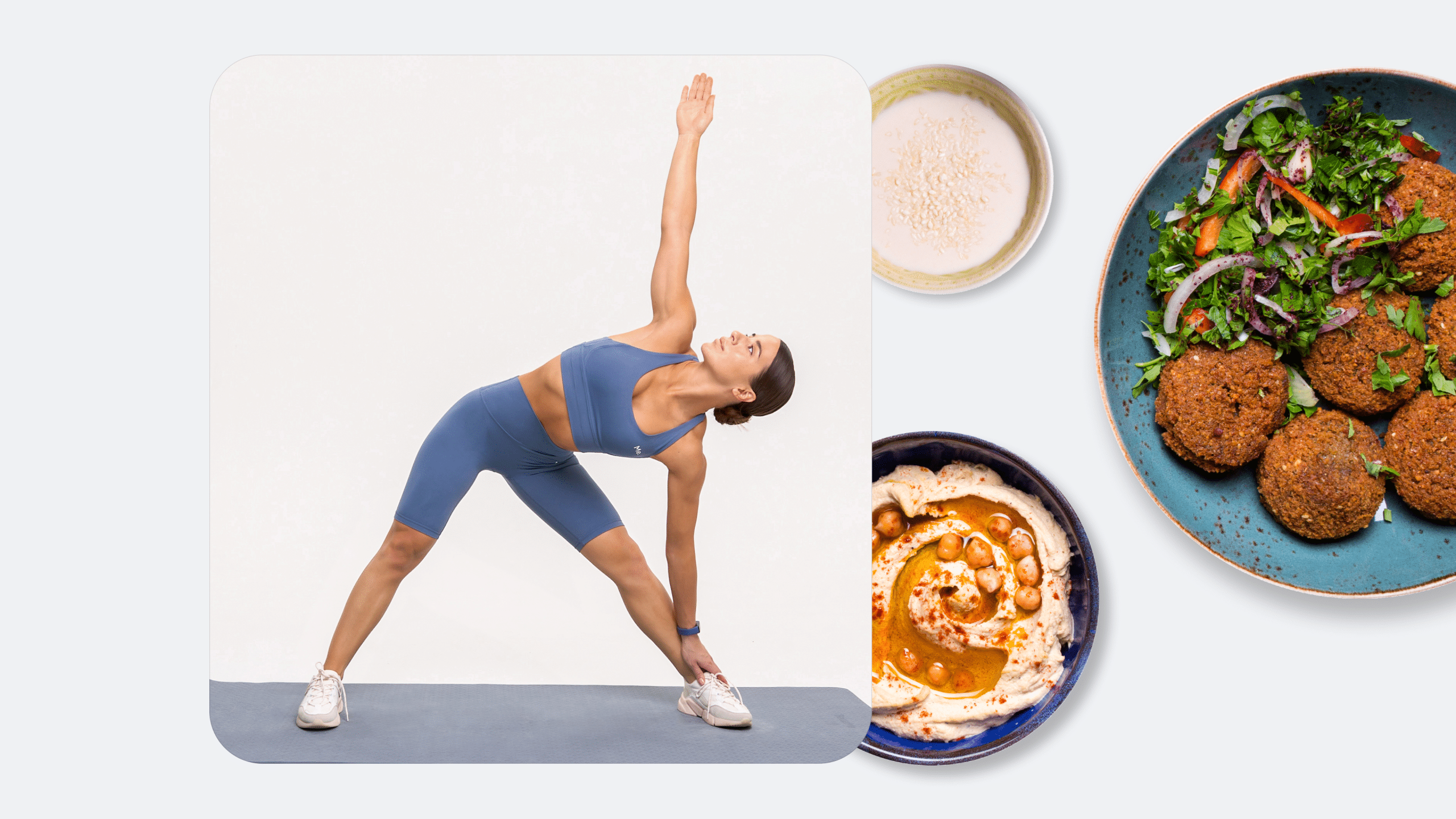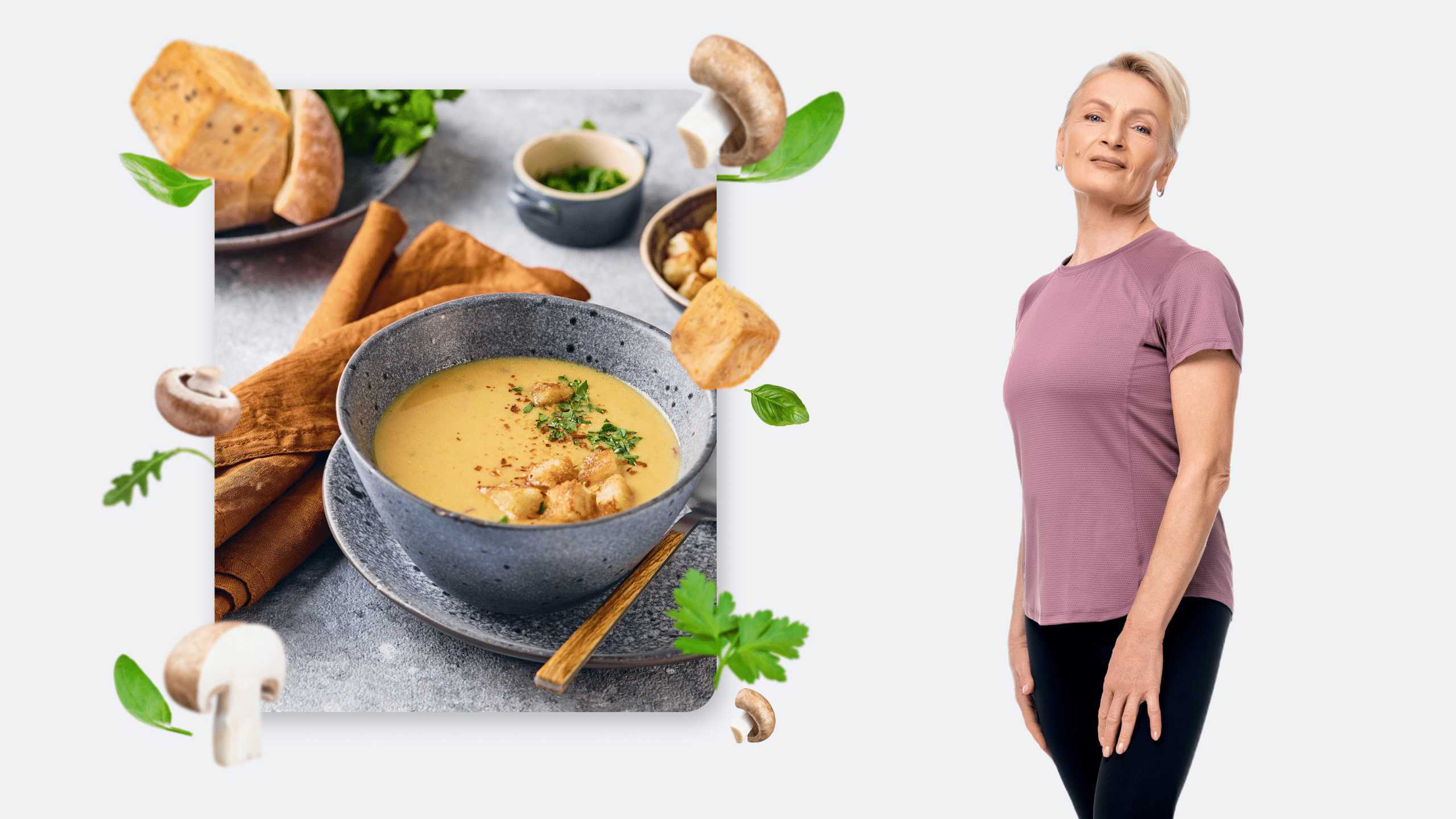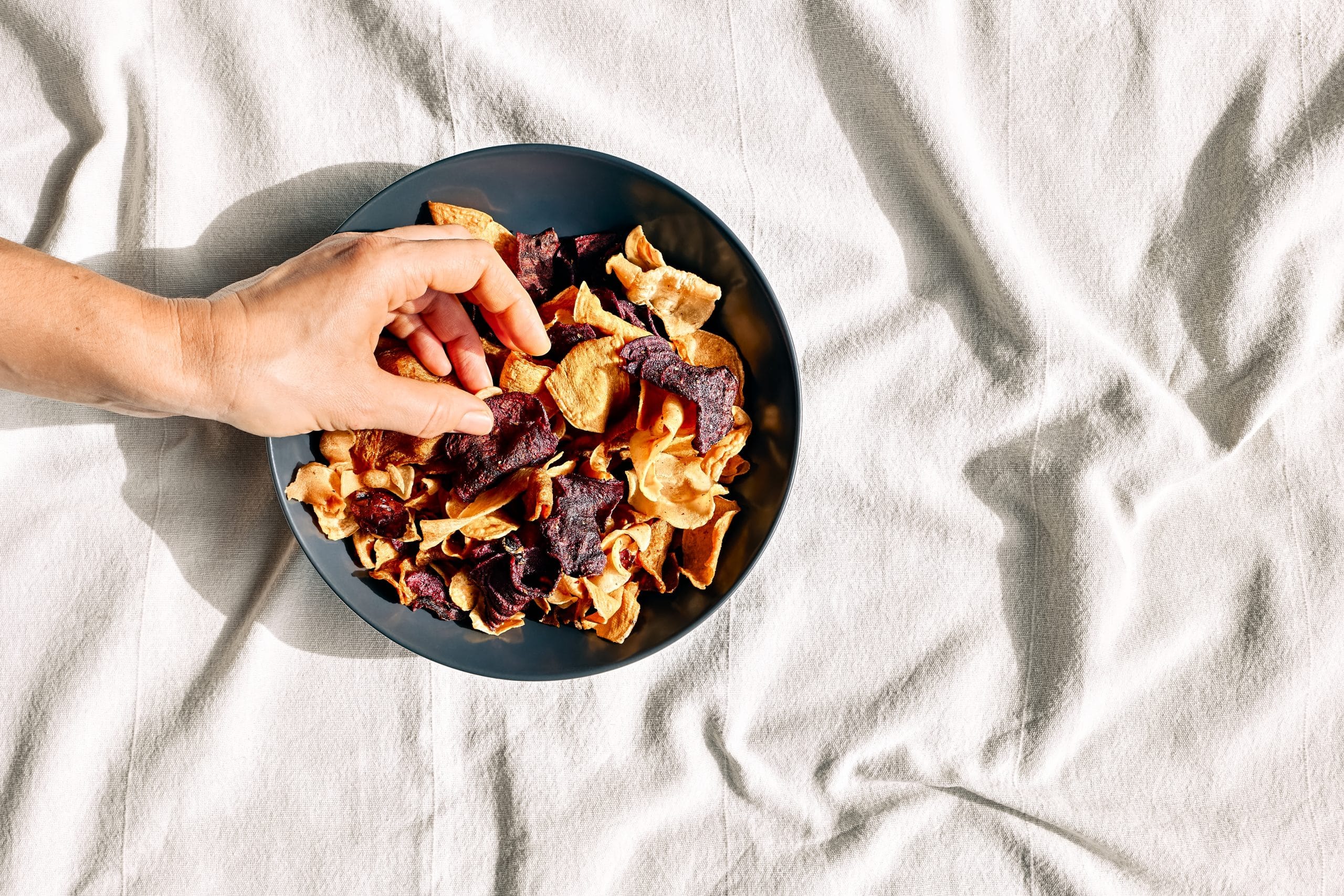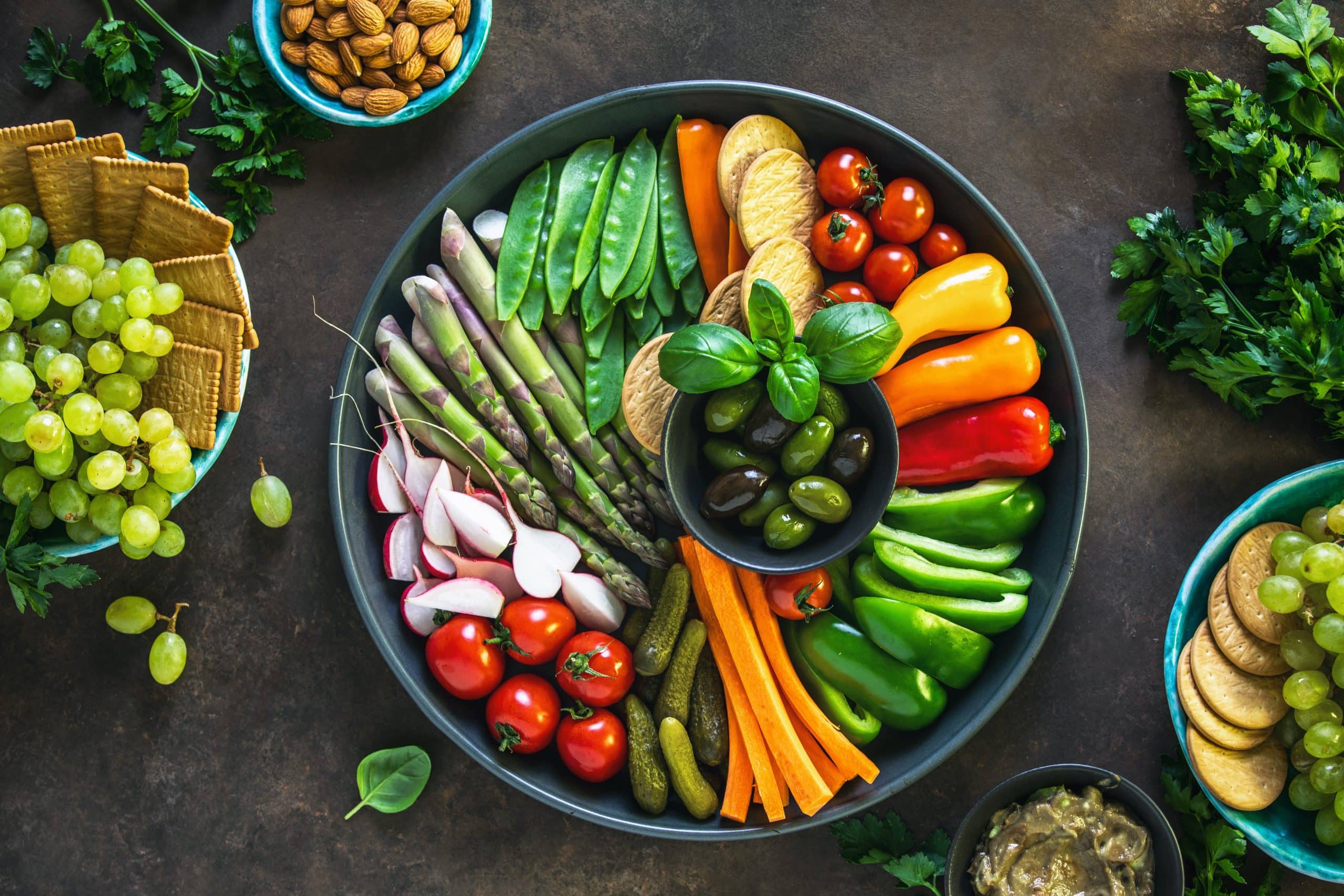What Is a Vegan Diet?
In a world where dietary choices are as diverse as the cultures they originate from, opting for a vegan lifestyle has become increasingly popular. However, making the transition can be daunting for many, particularly if you’re accustomed to a diet that includes animal products.
This is because veganism is not just a diet, it’s a lifestyle. Vegans follow the principles of ahimsa – not harming any living creatures. Clothes made of genuine leather and fur are off-limits to a real vegan. According to vegan principles, animals should not die or be exploited for the doubtful achievements of science or a simple human whim.
So, if you’re looking to adopt the vegan lifestyle, we explore the ins and outs of the powerful movement to kickstart your journey toward a plant-based lifestyle.
What Is the Difference Between a Vegan and a Vegetarian?
Let’s see how a vegan diet differs from a vegetarian diet. At first glance, the terms “vegan” and “vegetarian” may seem interchangeable, but they actually represent distinct dietary philosophies.
What do vegetarians eat? Their diet plan may include eggs, dairy products, and milk, depending on their individual preferences. Honey is also typically used without problems as the main idea is to consume no meat, poultry, or seafood (5, 9). The essential difference between a vegan and a vegetarian is the uncompromising denial of animal products on the plate – only entirely plant-based products are permitted on a vegan diet.
Read More: Vegan Smoothies for Weight Loss: That’ll Kick Your Metabolism into Turbo Mode
How to Start a Vegan Diet
Embarking on a vegan journey is a personal choice that requires commitment and mindfulness. To kickstart your transition, start by educating yourself about veganism and its ethical, environmental, and health-related implications. Nowadays, the vegan diet is becoming popular all over the world and there are two popular transition methods:
- instant
- gradual
The advantage of an instant transition is to break up with past experiences and eating habits, and plunge directly into veganism: study foods, choose the ones that are most tasty and wholesome, and then follow the course, adjusting it slightly based on your well-being and preferences.
Another option for a gradual transition is suitable for those who have recently learned about this topic or who find it difficult to start a vegan lifestyle without preparation. The easiest way to start is to switch to a vegetarian diet first, continuing to consume dairy products, eggs, honey, etc., for a period of transition (5). You can experiment with new recipes, stock your kitchen with vegan staples, and seek support from online communities such as BetterMe or local vegan groups for guidance and encouragement.
What Does a Vegan Diet Consist of?
Vegans exclude any kind of animal-based food in favor of entirely plant-based nutrition. Imagine a plate bursting with vibrant colors, tantalizing aromas, and an explosion of flavors that dance on your taste buds. That’s the beauty of a vegan diet — it’s not about what you can’t eat; it’s about embracing a whole new world of culinary possibilities. Every person can make an individual vegan diet plan by choosing from a huge variety of products in the categories below (1, 2, 9):
- Fruits: Get ready to indulge in nature’s candy aisle. From strawberries and avocados to mangoes and oranges, fruits are the star of the vegan diet. Don’t forget colorful blueberries, blackberries, raspberries, and more. Also, incorporating cranberries in your vegan diet can enhance both taste and nutritional value.
If you’re not aware of the cranberry juice benefits for women, you’re missing out.
- Vegetables: Leafy greens such as spinach, kale, and chard are packed with vitamins, minerals, and antioxidants that keep you feeling vibrant and alive. Root vegetables such as carrots, sweet potatoes, and beets add earthy flavors and hearty textures to your meal. And let’s not forget about crunchy bell peppers, tomatoes, and crispy cucumbers — the possibilities are endless.
- Whole Grains: It’s time to get your carb fix in the best way possible. Whole grains such as quinoa, farro, barley, and oats are delicious and also rich in fiber. Whole grains are the backbone of a balanced vegan diet.
- Legumes: Beans are good for the heart and so much more. Chickpeas, lentils, black beans, and kidney beans are affordable and versatile and packed with plant-based protein, fiber, and essential nutrients. Soybeans are rich in protein and soy products such as tofu make excellent meat, egg, or dairy substitutions. From creamy hummus to spicy chili and savory curries to hearty stews, legumes add depth, flavor, and a satisfying protein punch to your meals.
- Nuts and Seeds: Almonds, walnuts, cashews, and peanuts are deliciously crunchy and loaded with healthy fats, protein, and essential vitamins and minerals. Add them to salads, make creamy nut butter, or enjoy a handful as a snack. And don’t forget about seeds such as chia, flax, pumpkin, and sunflower — they’re tiny powerhouses of nutrition.
- Plant-Based Dairy Alternatives: Thanks to the wonders of modern food science, there’s a vegan alternative for just about every dairy product. From creamy almond milk to velvety coconut yogurt, tangy cashew cheese, and decadent oat milk ice cream — you won’t be deprived of flavor ever again.
Whether you’re looking to simply pep up your fitness routine, jazz up your diet with mouth-watering low-calorie recipes, or want to get your act together and significantly drop that number on your scale, the BetterMe app has got you covered. Improve your body and revamp your life with us!
What Foods Do Vegans Not Eat?
Okay, curious carnivore-turned-veggie voyager, let’s talk about the foods that vegans give a polite pass to:
- Meaty Morsels: Say goodbye to anything that once mooed, clucked, oinked, or swam in the sea. This means beef, chicken, pork, fish, and all their meaty pals are off the menu for vegans.
- Dairy Delights: Milk, yogurt, ice cream, and cheese are a no-go for vegans. Whether it’s cow’s milk, cheese made from cow’s milk, or any other dairy product, it’s all a non-starter in the vegan world.
- Egg-cellent Edibles: Time to give those chicken eggs a break. Vegans skip the sunny-side-up in favor of egg-free alternatives. Luckily there are tons of substitutes, such as tofu scramble and chickpea flour omelets.
- Honey Honey: Bees are buzzing buddies, not ingredients. That’s why vegans steer clear of honey and other bee-derived products. Go for maple syrup, agave nectar, and date syrup to satisfy your sweet tooth.
- Gelatin Goodbyes: Sorry, gummy bears, you’re not invited to the vegan party. Gelatin, which is made from animal bones and connective tissue, is a common ingredient in gummy candies, marshmallows, and other sweet treats. You’ll get good at scanning ingredient labels.
- Sneaky Animal By-products: Watch out for those sneaky animal-derived ingredients that are hiding in processed foods – things such as whey, casein, carmine, or shellac. Read the ingredient list and do a little detective work before you buy anything packaged or processed.
How to Get Protein on a Vegan Diet
Generally, switching to a vegan diet is characterized by lower protein intake. A common fear is that eliminating animal products makes it difficult to achieve adequate protein intake, but this doesn’t have to be the case.
You can easily pack at least 6 sources of plant-based protein into your meals and drinks.
- Nuts and Nut Butter: Nuts aren’t just for squirrels – they’re also a fantastic source of plant-based protein. Almonds, peanuts, cashews, and walnuts are packed with protein, healthy fats, and a whole lot of deliciousness.
- Beans and Legumes: Beans are the superheroes of the plant-based world. Whether you fancy black beans, chickpeas, kidney beans, or lentils, these little legumes are chock-full of protein and fiber.
- Quinoa: Quinoa isn’t just fun to say – it’s also a nutritional powerhouse. This ancient grain is a complete protein, which means it contains all nine essential amino acids your body needs (10).
- Vegan Meat Substitutes: Are you craving something meaty? With a plethora of vegan meat substitutes on the market, you can enjoy all your favorite dishes without harming a single hair on an animal’s body. From veggie burgers and seitan sausages to tofu nuggets and tempeh bacon, there’s no shortage of plant-based protein-packed options to choose from (11).
- Tempeh and Tofu: Tofu is the versatile chameleon of vegan cuisine. This soy-based superstar can take on any flavor you throw at it. With tofu and tempeh, the protein possibilities are endless.
- Nutritional Yeast: Nutritional yeast may not look like much, but don’t let its unassuming appearance fool you – this stuff is pure magic. Not only does it add a deliciously cheesy flavor to dishes, it’s also full of protein and usually fortified with vitamins and minerals that are more difficult to get on a vegan diet.
What Is a Vegan Keto Diet?
The ketogenic diet is low in carbs, high in fat, and moderate in protein. Vegans can attain ketosis by eating high-fat, plant-based products such as coconut oil, avocados, seeds, and nuts. Vegan diets have been linked to health benefits, including weight loss and a lower risk of heart disease and diabetes (4, 7, 8). Keto diets can help some people lose weight, but don’t work well for everyone.
An essential feature of following a vegan keto diet is using more vegan healthy foods based on a high amount of fat and low in carbs, excluding grains or starchy vegetables by getting calories from whole foods. While traditional keto diets rely heavily on animal-derived fats and proteins, vegan keto enthusiasts obtain their macros from plant-based sources such as avocados, nuts, seeds, coconut oil, and non-starchy vegetables. Both vegan and keto diets are quite restrictive, but combining them is incredibly restrictive, making it difficult to meet nutritional needs, and this isn’t for everyone.
Foods to Eat
- Avocados: Whole avocados, guacamole. Dip your vegetables in it and you’ll forget about meat.
- Berries: Blueberries, blackberries, raspberries, and strawberries. A great topping for vegan parfaits or as a standalone dessert.
- Coconut products: Full-fat coconut milk, coconut cream, unsweetened coconut. Blend with smoothies or froth it up over your morning latte.
- Condiments: Nutritional yeast, lemon juice, salt, pepper. Enhance your meals with a sprinkle of flavor.
- Nuts and Seeds: Almonds, Brazil nuts, walnuts, hemp seeds, chia seeds, macadamia nuts, pumpkin seeds. Sprinkle them over your yogurt or have a handful as a snack.
- Nut and Seed Butter: Peanut butter, almond butter, sunflower butter, cashew butter. Spread over vegan bread(14)? Chef’s kiss!
- Non-Starchy Vegetables: Leafy greens, Brussels sprouts, zucchini, broccoli, cauliflower, peppers, mushrooms. Salads, stir-fries, sauteed – the world is your vegan oyster.
- Oils: Olive oil, nut oil, coconut oil, MCT oil, avocado oil.
- Vegan Protein Sources: Tofu, tempeh. These soy-based wonders are chock-full of protein.
- Vegan Full-Fat Dairy Alternatives: Coconut yogurt, vegan butter, cashew cheese, vegan cream cheese. Who said you’ve got to deprive yourself as a vegan? Go nuts!
- Herbs and Spices: Basil, ginger, chili flakes, smoky paprika. Indulge in the soothing warmth and immune-boosting properties of ginger tea with honey – a delightful beverage that can lift your spirits up and invigorate your body.
How to Lose Weight on a Vegan Diet
A vegan diet is incredibly popular among dieters who are striving for a healthy weight. Plant-based foods are generally lower in calories than animal products. They’re often high in fiber, which promotes satiety (feeling of fullness) and is beneficial for digestion. Many people feel more energized when they follow a vegan diet as it allows them to do more, such as resuming exercises, fitness, or yoga courses. This can have a beneficial effect on the health of our bodies and lead to weight loss (3).
If you’d like to pair your diet plan with a strong fitness routine, try BetterMe’s 1-month workout plan to get ripped and see how your body responds.
It’s important to be mindful, even on a vegan diet.
People take for granted that a vegan diet promotes weight loss. This is often true, but sometimes not, as it depends on proper diet planning.
To lose weight, you must reduce the overall calories you consume. There are plenty of vegan high-calorie, ultra-processed foods that are high in added sugar and unhealthy fats. A diet that leans too heavily on these foods (which can be convenient) may not promote weight loss if you consume more calories than you need. Try to focus the majority of the time on fruits, vegetables, whole grains, lean proteins, and healthy fats for a balanced, nutrient-dense, reduced-calorie diet that should result in weight loss.
If you’ve mustered up the courage to crush your weight loss goal, let Betterme take the sting out of this demanding process. Our app will help you restructure your habits, remold your life and crank up your fitness results!
Is the Vegan Diet Healthy and Safe?
Benefits of Veganism
- Plant foods tend to be lower in calories.
- Plant foods contain many dietary fibers that contribute to a feeling of fullness.
- Fiber also improves digestion and helps promote a healthy gut microbiome.
- Eating more plant-based foods may help lower blood pressure and cholesterol, both risk factors for heart disease.
- The fiber in fruits, vegetables, whole grains, legumes, and other plant-based foods helps slow down the absorption of glucose into the bloodstream, which is helpful for managing blood glucose levels if you have insulin resistance or diabetes (1).
How to Eat Vegan for Beginners
Now that you’re aware of what it takes to begin a plant-based diet, let’s get started on your vegan adventure with some fun and friendly tips:
- Take It One Step at a Time: Going vegan doesn’t need to happen overnight. Start by making small changes to your diet, such as swapping cow’s milk for almond milk or trying a meatless Monday. Every little plant-based swap counts (12).
- Educate Yourself: Knowledge is power, my friend. Take some time to learn about veganism — why people choose it, the environmental benefits, and how to get all the nutrients your body needs from plant-based foods. This will make the transition a whole lot easier.
- Stock Up Your Kitchen: It’s time to give your kitchen a vegan makeover. Fill your fridge and pantry with delicious plant-based staples such as fruits, vegetables, whole grains, legumes, nuts, and seeds. Having plenty of vegan-friendly ingredients on hand will make meal planning a breeze.
- Get Creative in the Kitchen: Let your culinary creativity shine. Experiment with new recipes and flavors to discover your favorite plant-based meals. Don’t be afraid to try out different cooking techniques and ingredients – you may just surprise yourself with how tasty vegan food can be.
- Explore Vegan Alternatives: Say hello to the vegan versions of your favorite foods. From plant-based burgers and dairy-free cheese to vegan ice cream and chocolate, there’s a world of delicious vegan alternatives just waiting to be discovered.
- Find Vegan-Friendly Restaurants: Eating out as a vegan can be a walk in the park with a little research. Look for restaurants in your area that offer vegan options or specialize in plant-based cuisine. You may be surprised by how many delicious vegan dishes you can find when you know where to look.
- Connect with the Vegan Community: You’re not alone on your vegan journey. Connect with other vegans online or in your local community for support, advice, and recipe ideas. Join the BetterMe app and surround yourself with like-minded individuals who can make the transition to vegan eating a whole lot more fun and fulfilling.
- Be Kind to Yourself: Remember, nobody’s perfect – and that’s okay. If you slip up or find veganism challenging at times, don’t beat yourself up about it. Every step you take toward eating more plant-based is a step in the right direction, so be kind to yourself and celebrate your progress along the way.
Read More: Vegan vs. Keto: Which Bandwagon Should You Jump on to Reach Your Goals?
FAQs
What is a vegan diet?
A vegan diet is a plant-based eating plan that excludes all animal products, including meat, poultry, seafood, dairy, eggs, and honey. It’s not just about what you eat, but also about avoiding any products derived from animals, such as leather or fur.
What’s the difference between a vegan and a vegetarian diet?
While both diets focus on plant-based foods, the main difference lies in the inclusion of some animal products. Vegetarians may still consume eggs, dairy, and honey, while vegans strictly avoid all animal-derived foods and products.
How can I start a vegan diet?
Starting a vegan diet can be approached in two ways: instant transition or gradual transition. Instant transition involves immediately switching to a vegan diet, while gradual transition involves transitioning from a standard diet to a vegetarian diet first, then gradually eliminating animal products.
What foods do vegans eat?
Vegans primarily consume fruits, vegetables, whole grains, legumes, nuts, seeds, and plant-based dairy alternatives. These foods provide essential nutrients while offering a wide variety of flavors and textures.
What foods do vegans avoid?
Vegans avoid all animal-derived foods, including meat, poultry, seafood, dairy, eggs, and honey. They also steer clear of products containing animal-derived ingredients, such as gelatin and certain other food additives.
Is the vegan diet healthy and safe?
Yes, when it’s well-planned, a vegan diet can be both healthy and safe. It offers numerous potential health benefits, including weight management, improved heart health, and reduced risk of chronic diseases such as diabetes and certain cancers. As with any diet, a vegan diet can be unhealthy and inadequate if not planned properly.
Can a vegan diet help with weight loss?
Yes, a well-planned vegan diet can support weight loss by providing nutrient-dense, low-calorie foods that promote satiety and improve overall health. However, it’s important to monitor portion sizes and prioritize whole, nutrient-dense foods for optimal results.
What is the most-eaten vegan food?
The most commonly eaten vegan food varies depending on personal preferences and cultural backgrounds. However, some of the most popular vegan foods include fruits such as bananas, apples, and berries, vegetables such as spinach, broccoli, and carrots, grains such as rice, quinoa, and oats, legumes such as beans, lentils, and chickpeas, nuts and seeds, and plant-based protein products such as tofu, tempeh, and seitan. These foods are versatile, nutritious, and widely available, which makes them staples in many vegan diets.
What do vegans drink?
Vegans have a wide range of available beverage options. Some of the most commonly consumed drinks in a vegan diet include water, herbal tea, fruit juices, vegetable juices, almond milk, soy milk, oat milk, coconut milk, and other plant-based milk alternatives. In addition, many vegans enjoy coffee, tea, smoothies, and shakes made with vegan ingredients. It’s important for vegans to check labels and ingredients to ensure that their drinks are free from animal-derived products such as dairy or honey.
What is a vegan that still eats meat?
A vegan who still eats meat would not be considered a vegan according to the traditional definition of the term. Veganism is a lifestyle and dietary choice that involves abstaining from the consumption of all animal products, including meat, dairy, eggs, and honey, in addition to avoiding other forms of animal exploitation. If someone identifies as a vegan but continues to eat meat, they may not fully adhere to the principles of veganism and could be considered more accurately as a flexitarian, someone who primarily follows a plant-based diet but occasionally consumes animal products.
The Bottom Line
Embarking on a vegan journey is not just about changing what you eat; it’s a lifestyle choice that reflects compassion for animals, environmental consciousness, and a commitment to personal health. By understanding the nuances of veganism, embracing plant-based alternatives, and prioritizing a balanced and nutritious diet, you can nourish your body, mind, and spirit while also contributing to a more sustainable and compassionate world.
The modern menu contains an excess of meat, salt, saturated fatty acids, added sugar, and refined grain products with relatively few fruits and vegetables. Following a vegan diet can help you improve your nutrition plan for your overall health. However, a complete elimination of animal food can lead to serious health problems if it’s not approached with caution. You can still get all the essential vitamins and nutrients that keep your body healthy and safe by carefully planning your meals. So, whether you’re taking your first steps toward a vegan lifestyle or you’ve been plant-powered for years, remember that every meal is an opportunity to make a positive impact – for yourself and for the planet.
DISCLAIMER:
This article is intended for general informational purposes only and does not serve to address individual circumstances. It is not a substitute for professional advice or help and should not be relied on for making any kind of decision-making. Any action taken as a direct or indirect result of the information in this article is entirely at your own risk and is your sole responsibility.
BetterMe, its content staff, and its medical advisors accept no responsibility for inaccuracies, errors, misstatements, inconsistencies, or omissions and specifically disclaim any liability, loss or risk, personal, professional or otherwise, which may be incurred as a consequence, directly or indirectly, of the use and/or application of any content.
You should always seek the advice of your physician or other qualified health provider with any questions you may have regarding a medical condition or your specific situation. Never disregard professional medical advice or delay seeking it because of BetterMe content. If you suspect or think you may have a medical emergency, call your doctor.
SOURCES:
- A low-fat vegan diet improves glycemic control and cardiovascular risk factors in a randomized clinical trial in individuals with type 2 diabetes. (2006, ncbi.nlm.nih.gov)
- A multicenter randomized controlled trial of a plant-based nutrition program to reduce body weight and cardiovascular risk in the corporate setting: the GEICO study. (2013, ncbi.nlm.nih.gov)
- A two-year randomized weight loss trial comparing a vegan diet to a more moderate low-fat diet. (2007, ncbi.nlm.nih.gov)
- Beyond meatless, the health effects of vegan diets: findings from the Adventist cohorts. (2014, ncbi.nlm.nih.gov)
- Dietary adherence and acceptability of five different diets, including vegan and vegetarian diets, for weight loss: The New DIETs study. (2015, ncbi.nlm.nih.gov)
- Low glycemic index vegan or low-calorie weight loss diets for women with polycystic ovary syndrome: a randomized controlled feasibility study. (2014, ncbi.nlm.nih.gov)
- Plant-based, no-added-fat or American Heart Association diets: impact on cardiovascular risk in obese children with hypercholesterolemia and their parents. (2015, ncbi.nlm.nih.gov)
- The effects of a low-fat, plant-based dietary intervention on body weight, metabolism, and insulin sensitivity. (2005, ncbi.nlm.nih.gov)
- Vegetarian, vegan diets and multiple health outcomes: A systematic review with meta-analysis of observational studies. (2017, ncbi.nlm.nih.gov)
- What are some of the top vegan sources of protein? (2021, medicalnewstoday.com)
- Are Plant-Based Meat Substitutes Healthy? What You Need to Know (2023, bhg.com)
- How to go vegan (vegansociety.com)
- Is Bread Vegan? (2016, peta.org)










